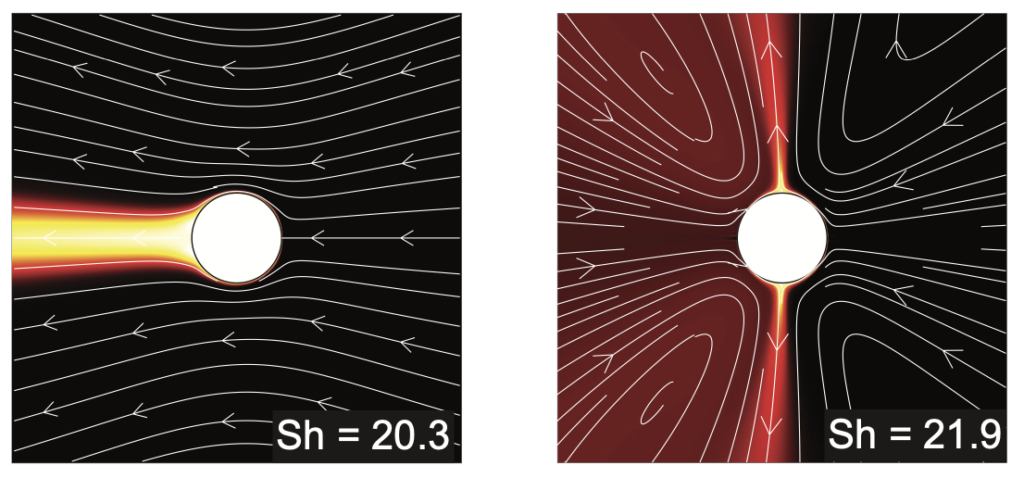Feeding of attached and swimming ciliates achieve hydrodynamic equivalence

Flow physics imposes no constraint on the feeding rates that are achievable by the swimming versus sessile strategies – they can both be equally competitive in transporting nutrients and wastes. The evolutionary pressures that shaped “swim” and “stay” strategies acted in concert with, not against, flow physics [2].
Optimal feeding of attached ciliates depends on Péclet number


Concentration and flow field around a sessile ciliate corresponding to cilia beating in the first (left) and the second (right) mode. Colormap: concentration field, from 0% (light ) to 100%(dark) of concentration background. Arrows: streamlines of flow field.
Under low Péclet number conditions, optimal feeding occurs via a ‘treadmill’ motion of surface cilia, regardless of the organism’s mobility. However, at high Péclet numbers, a symmetric dipolar surface velocity that keeps the organism stationary achieves near-optimal feeding performance for swimming ciliates and serves as an optimal solution for attached ciliates [1].
Feeding in non-uniform concentration field
Cross section of a 3D simulation of nutrients concentration evolution surrounding a sessile model ciliate feeding in a non-uniform concentration field. Surface motion and feeding follow horizontal axis-symmetry. Initial concentration field has a constant concentration gradient with higher on the right. Two concentration contour lines are at concentration level 20% (solid line), and at level 120% (dash line).
Reference
- Liu, J., Man, Y., Costello, J. H., & Kanso, E. (2025). Optimal Feeding of Swimming and Attached Ciliates. Journal of Fluid Mechanics, 1003, A26.
- Liu, J., Man, Y., Costello, J. H., & Kanso, E. (2024). Feeding Rates in Sessile versus Motile Ciliates are Hydrodynamically Equivalent. eLife, 13.
- Liu, J., Man, Y. & Kanso, E. (2024). Nutrient Transport in Concentration Gradient.